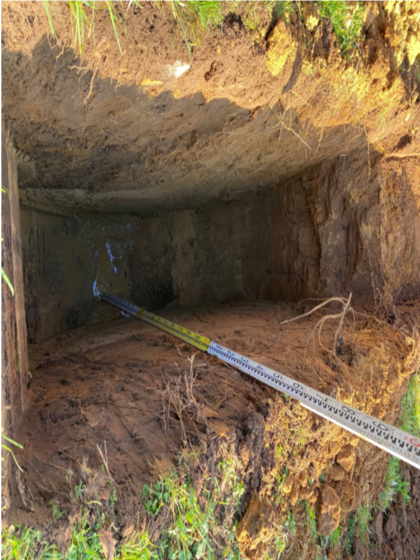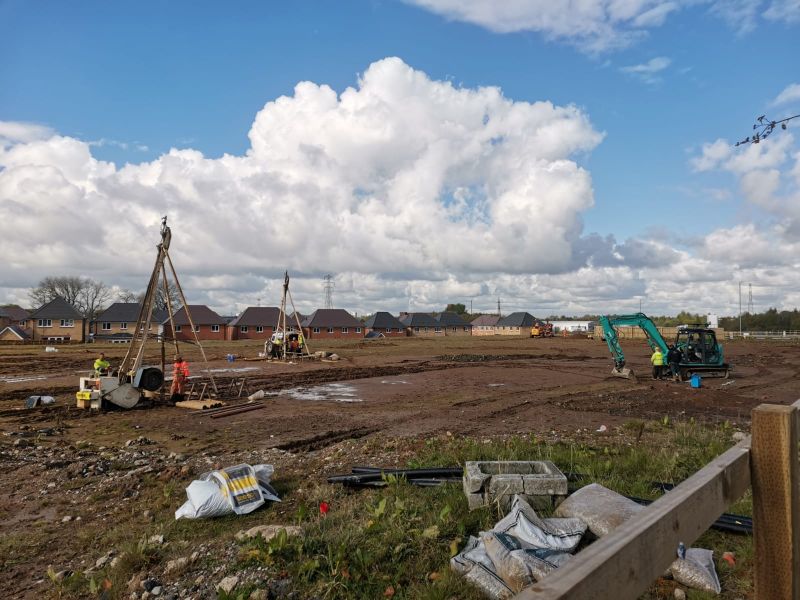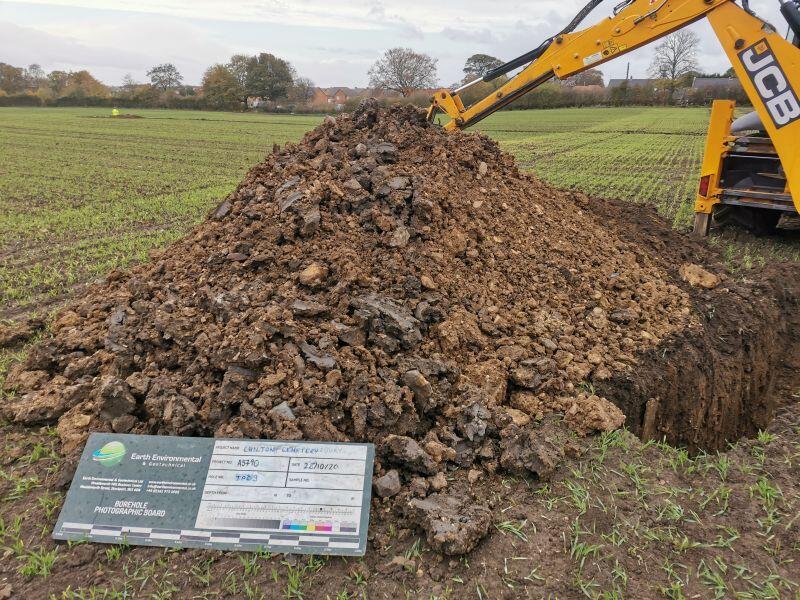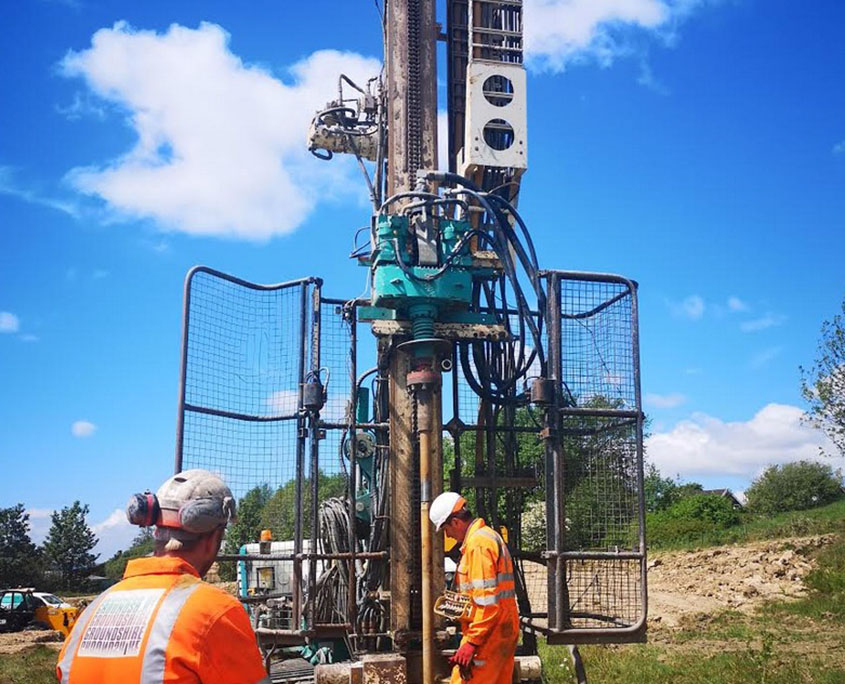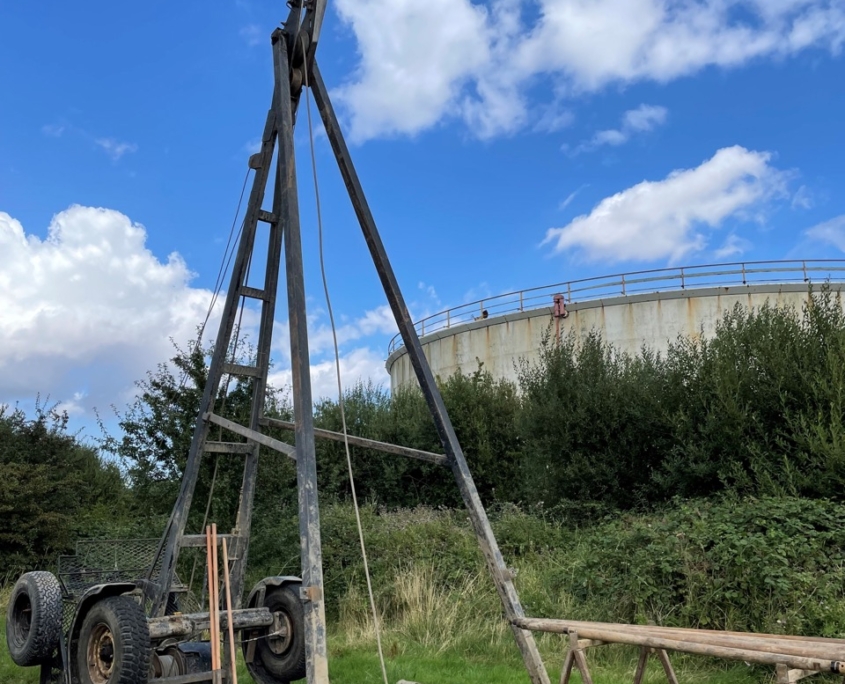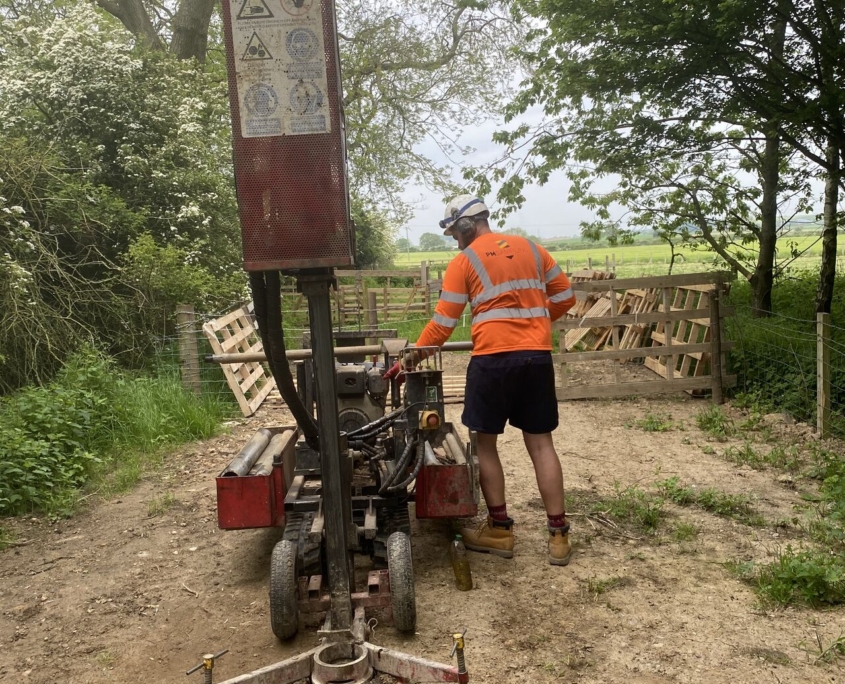Trial pits are also known as test pits, trial trenches and trial pitting. Trial Pits are used as part of geotechnical and environmental site investigations. Before any construction project starts, the ground conditions and soil composition must be understood to determine whether the proposed construction is feasible, and if specific foundation designs are required.
Trial pits are a type of intrusive site investigation used to determine the ground conditions across a site to study or sample the structure and composition of the subsurface.
Earth Environmental & Geotechnical offer Trial Pitting throughout the UK as part of their Geotechnical and Environmental Site Investigations Services. Before any site investigations commence it is important to understand your development sites ground conditions and what Ground Investigation techniques are most appropriate.
If you would like to discuss your development site, call our Head Office on Tel: 0161 975 6088
Trial Pits | Sub Surface Site Investigations | Earth Environmental & Geotechnical
What is a Trial Pit?
Trial pits typically proceed construction works to determine the geology and the water table of that specific site. The pits are dug at regular intervals and are typically between 1 and 4 metres deep. These test pits can be dug by hand or machine excavated. If there are known subsurface structures e.g., utilities, water, electric cables etc then the test pits would be dug by hand.
Structural measures would be used to shore up the pit if the excavation is deeper than 1.2 metres. Safety issues of trial pitting, both during and after the investigation require consideration and appropriate safeguarding measures taken.
Hand Dug Trial Pits
Hand Dug trial pits are often used for small scale site investigations or where the trial pits need to avoid sub surface structures. Generally, a hand dug pit would be 1.2m – 1.5 m and the location swept with a CAT scanner or cable detection tool to avoid underground utilities etc. These test pits are used to obtain near surface soil samples or for locating the position of underground utilities and structures. Hand Dug trial pits can also be used for exposing existing foundations for further assessment, WAC Testing and contamination testing.
Machine Excavated Trial Pits
Machine Excavated Trial Pits can be used if greater depths are required over a larger area. Typically, these extend to between 1.5m or 6m depth, but generally a 3m depth will provide a good visual assessment. Although Machine Excavated Trial Pits are cost effective and quick, the larger machinery can cause ground disturbance.
If large trial pits are needed it may be advisable to use smaller test holes or boreholes using window sampler and mini rigs. If you would like to discuss your development site, please call us and we can advise the most pragmatic site investigation solution. Tel: 0161 975 6088
Why Use Trial Pits?
Trial pits (or trenches) can be more cost-effective than boreholes, but they cannot reach the same depth. Trial pitting is used as a cost-effective and quick method to gain a basic understanding of the soil profile throughout a site. They allow for a rapid examination of ground conditions across both the horizontal and vertical as the pit advances and faces exposed.
The advantage of test pits compared with light-cable percussion drilling or window sampling is the relative speed with which the work can be carried out.
Trial pits can be effective as they allow a large volume of ground to be inspected in situ, and samples for geotechnical and contamination testing can also be taken. Trial pits can be useful if ground is stable and can stand temporarily unsupported. But if there is water present it is not advisable to use trial pits as the wall sides may be unstable. The disadvantage of trial pits is the level of surface disturbance and the potential for wall collapse.
What are Trial Pits Used For?
Trial pits are used to determine the ground conditions as part of the site investigation. Trial pitting enables many different samples (both disturbed and undisturbed) to be taken, and various sampling methods to be facilitated these may include, Contamination tests, Vane Shear tests, Infiltration/ soakaway tests and CBR testing (in accordance with the guidance as set out in BRE 365) and in-situ strength testing.
At Earth Environmental & Geotechnical all trial pit site investigations are supervised by experienced engineers with a detailed understanding of geology and soil mechanics, compliant with ISO 14688-1, together with ISO 14688-2, (establishes the basic principles for the identification and classification of soils based on those material and mass characteristics most commonly used for soils for engineering purposes.)
In summary, trial pits are low-cost site investigation method to assess ground conditions typically used for Foundation Designs, Contamination Analysis, and further sampling methods.
Further Information on Site investigations and Ground Investigations
What are Ground Investigations?
Ground investigations are sub surface investigation and examination of the soil, rocks and groundwater below the surface. Ground Investigations should ideally follow the desk based study (Phase I Desk Study) and site walkover survey which will have identified areas of concern requiring further intrusive subsurface investigation.
The phase 1 desk study with site walkover survey will advise the strategy to be implemented for the ground investigations and the techniques best suited to the specific site.
What is a Ground Investigation Survey?
A ground Investigation survey is a 3 step process to achieve a detailed understanding of the soil parameters, rock and groundwater which impact the ground conditions of the development site. An accurate understanding of the ground conditions is necessary for all construction projects to be successful. The Ground Investigations will identify potential risks for your specific development. Then Earth Environmental have the expertise and experience to advice on what steps you can taketo mitigate these risks.
Step 1 – Complete the (Phase I Desk Study) and site walkover.
Using the interpretive report potential development issues, environmental and cost liabilities will be highlighted requiring further investigation. Before the ground investigations commence further pre site surveys may be completed for example.
A whole range of site specific pre site surveys can be completed depending on the requirements of your development land.
Step 2 – On site Ground Investigations.
The phase 1 desk study will define the scope of work for the preliminary ground investigations. A number of methods are used to obtain samples and to monitor and test them. For example, boreholes may be dug by hand around utility pipelines or by using a rig in more open areas. Ground investigation (GI) may also require digging of a trial pit or trench.
Ground Investigation Intrusive Techniques Examples:
Step 3 – Post Site Investigations
Once the preliminary ground investigations have been completed the results are analysed. If further site investigations are required these can be completed by our multidisciplined teams these could include:
An interpretive report will then be compiled from all the information and data gathered from the ground investigations, testing, monitoring for the site.
Earth Environmental & Geotechnical have been involved in Environmental & Geotechnical ground investigations for a wide range of developments. Contact us now to discuss your development
All Ground investigations are conducted in accordance with strict and well defined health and safety practices with site specific method statements and risk assessments provided. Prior to commencement on site service (gas sewers, electricity etc.) information is acquired from the client (or its agents) with utility tracing conducted, if required.
Many site investigations are conducted to discharge planning conditions and our staff always ensure, time permitting, that prior to delivery of a costed proposal an outline of the proposed works are initially discussed with the regulatory authorities.
Our staff have extensive experience in the design of geotechnical, mining and environmental site investigations in accordance with current best technical practices and planning guidance. The team are able to manage geotechnical and geo-environmental investigations for the most demanding of sites. Our multidisciplined teams include engineers, geologists, environmental scientists, drillers and technicians who are experienced in all aspects of ground investigation and remediation works.
In-house drilling rigs are wherever possible used for drilling work, with approved quality sub-contractors used for projects (where necessary).
Earth Environmental & Geotechnical conduct site investigations in accordance with Eurocodes that were introduced into UK design on 31 March 2010 and has invested in equipment and methodologies demanded by the standards. We however believe that high quality site investigations arise as a result of the design, supervision, monitoring and interpretation process rather than the field equipment used.


